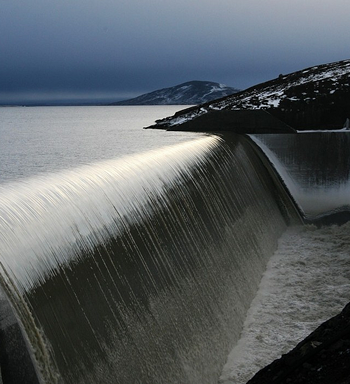GCSE Questions: Energy Sources Q16. (a) Iceland is a country that generates nearly all of its electricity from renewable sources. In 2014 Iceland had hydroelectric power stations with a total installed capacity of 1.986 MW, generating 72% of the country's electricity production.
Describe how electricity is generated in a hydroelectric power station. Include the useful energy transfers taking place. Water falls (from a higher level to a lower level) [4 marks] (b) In 2014 the UK still produced most of its electricity from fossil fuels. Many people in the UK left their televisions in 'stand by' mode when not in use, instead of switching them off. Adverts were used to try to encourage them to 'save money' by switching them off. It is also better for the environment if people learn to switch off their televisions, instead of leaving them in 'stand by' mode. Explain why. TVs in stand-by use tiny amounts of electricity, but many millions doing this accounts for a large amount of electricity.
[3 marks] (c) A scientist wrote in a newspaper: 'Appliances that do not automatically switch off when they are not being used should be banned.' Suggest why scientists alone cannot make the decision to ban these appliances. Any factor other than a scientific one was awarded a mark: economic, political or legal. [1 mark] (Total 8 marks) |
Follow me...
|






